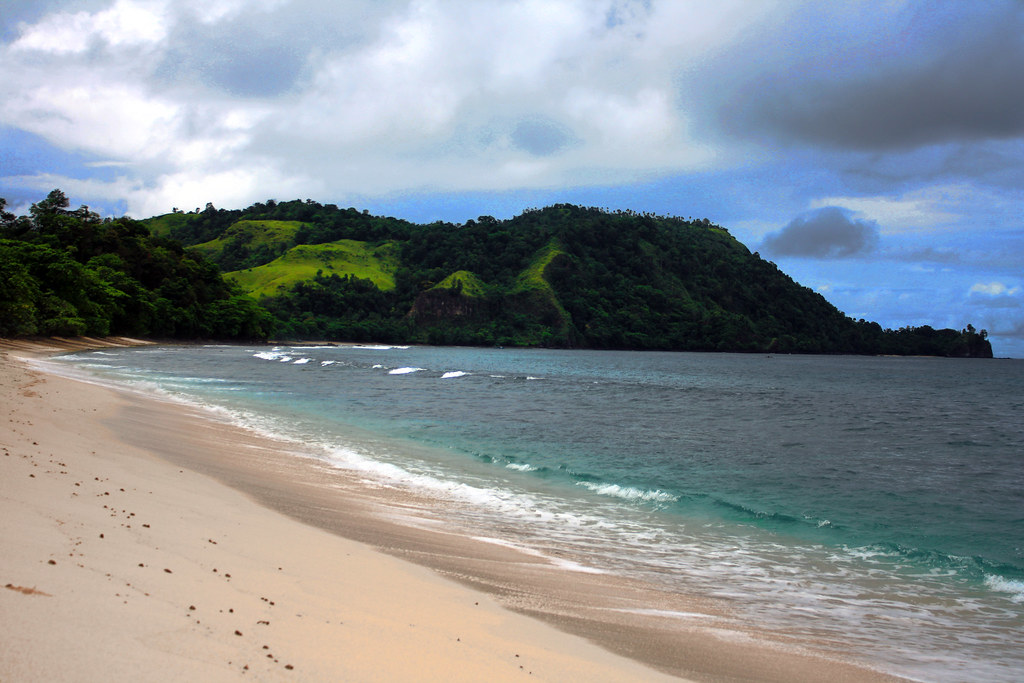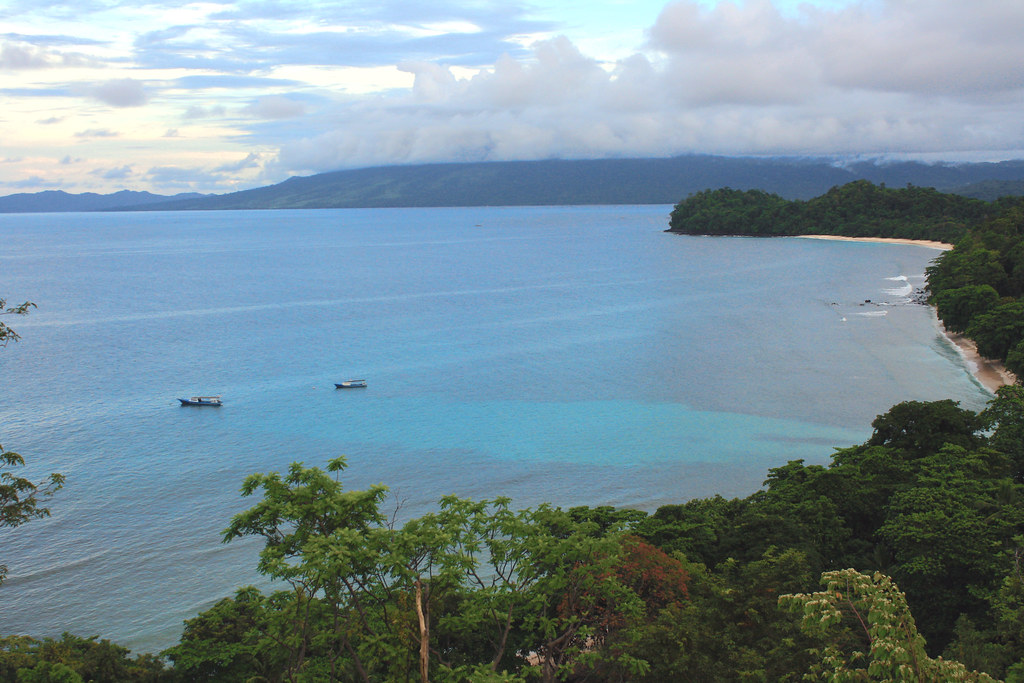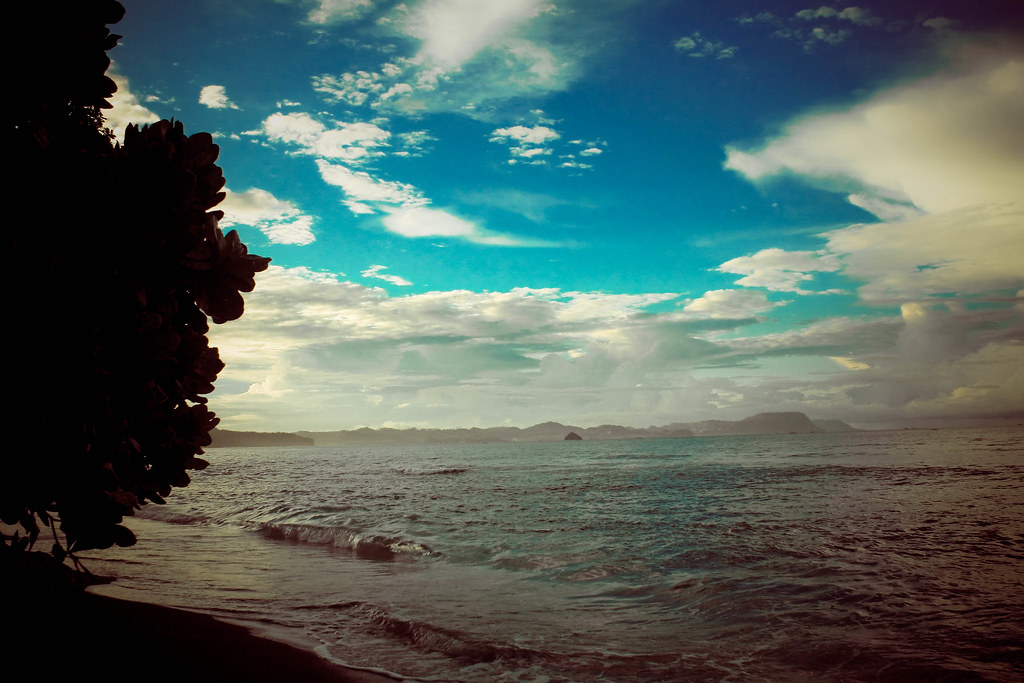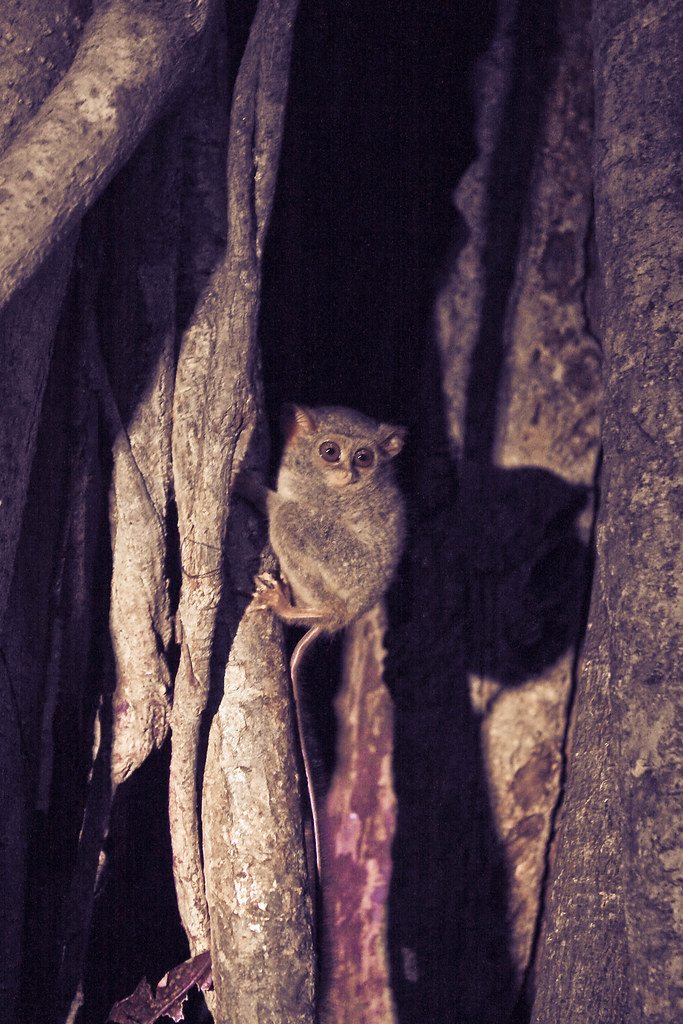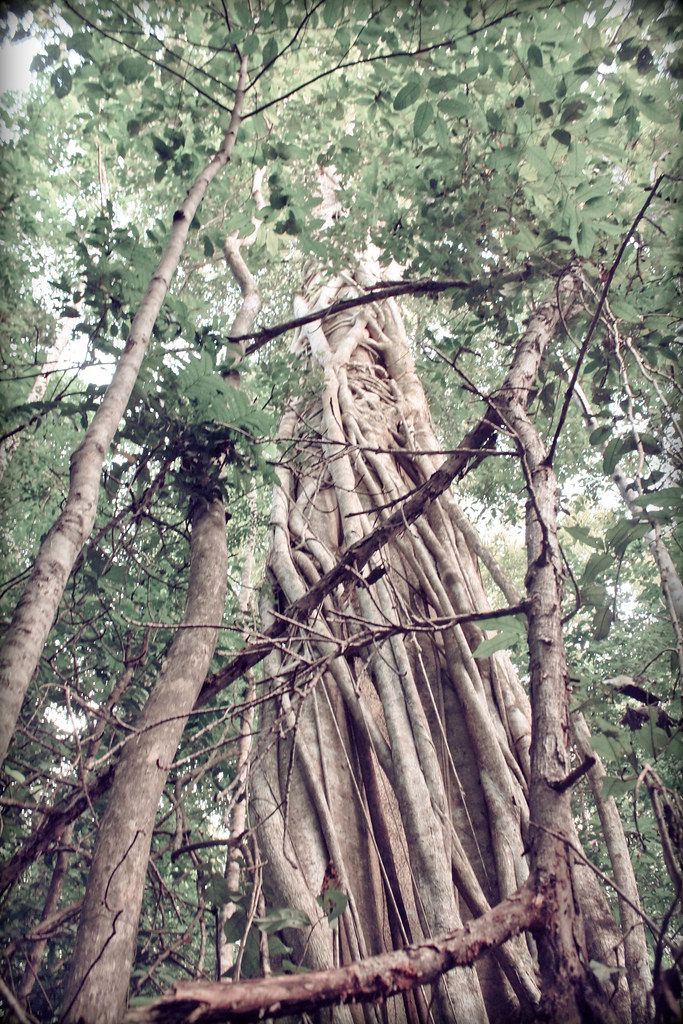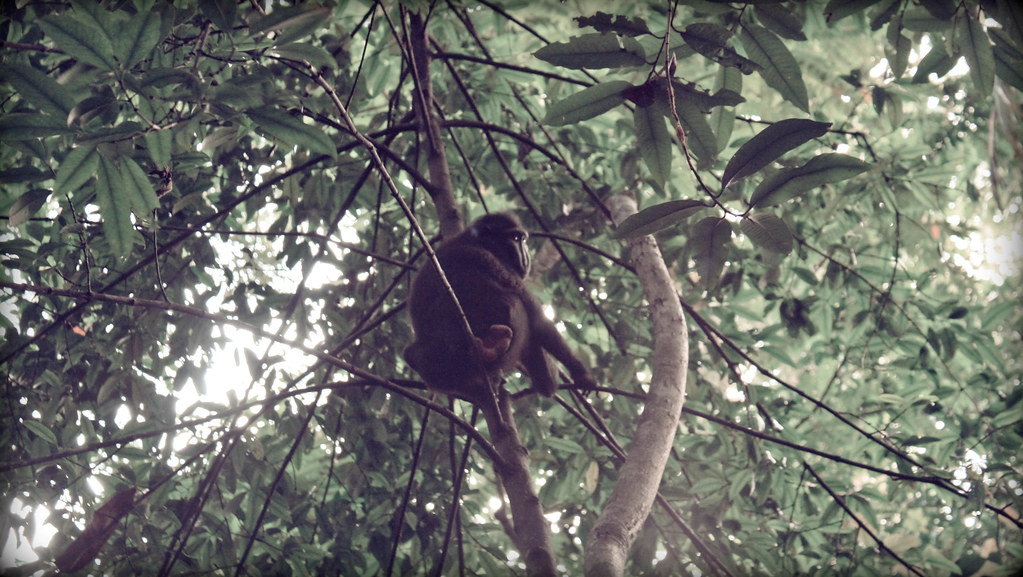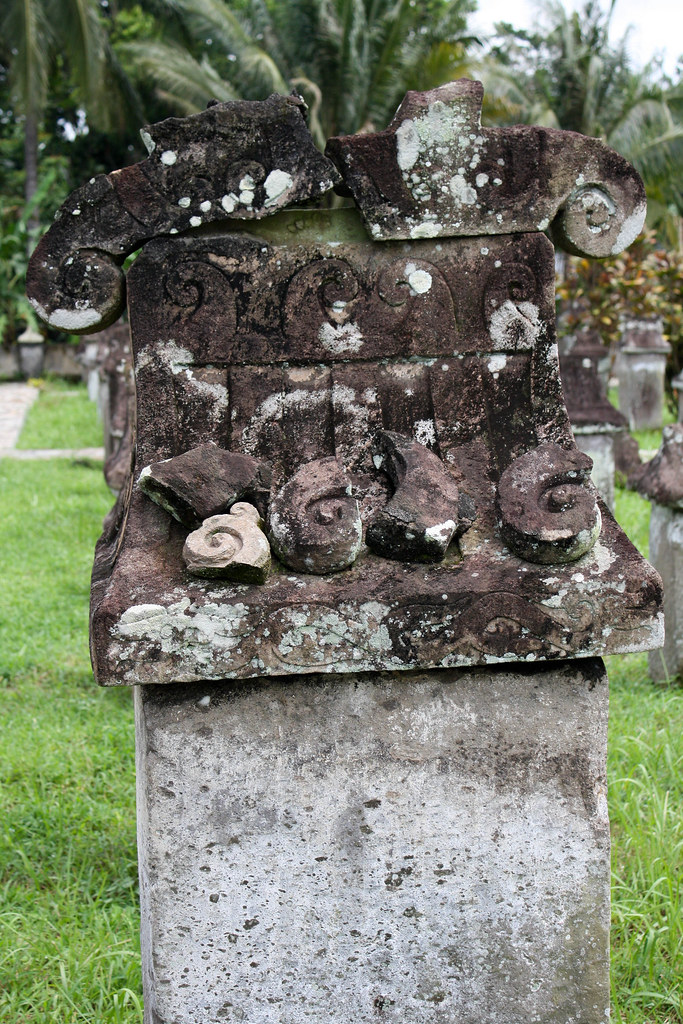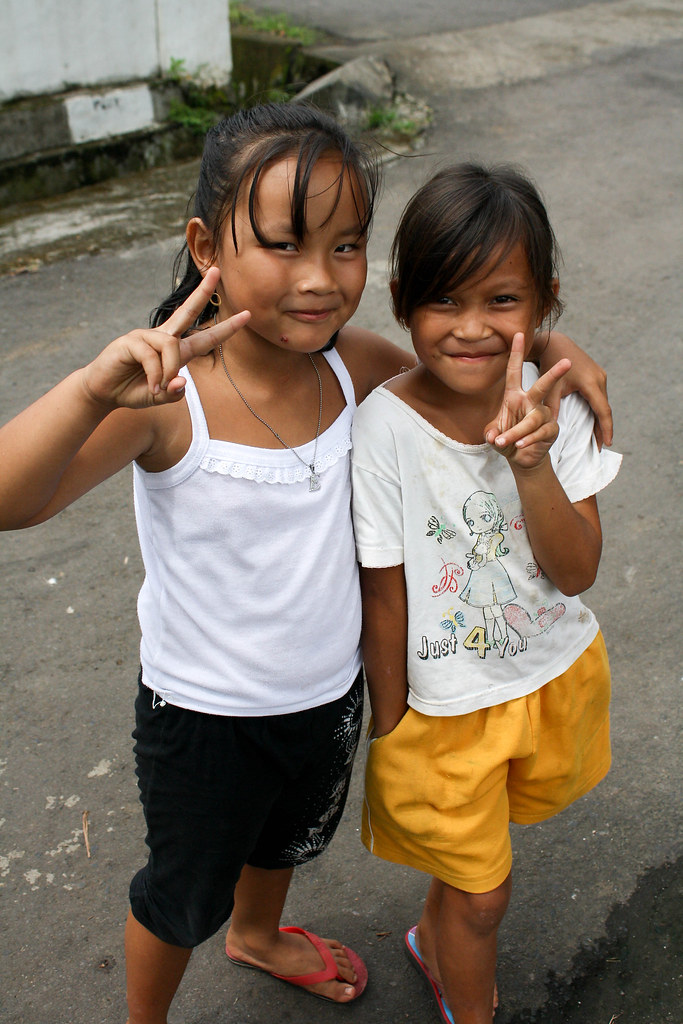Next stop was the Tangkoko Nature Reserve. Head to Bitung, another big city in North Sulawesi, and there will be a small sign (you can barely see it) stating that this is the road to the Tangkoko Nature Reserve. The roads are small and hilly, and make sure you ask people where it is because you can easily get lost in the area. Arriving in the nature reserve, each guest must pay an entry fee (they differentiate between local and international tourists - foreigners pay approx IDR 85,000 each), and they will provide you with a guide. I forgot whether you also have to pay for the guide or not, but it is better for you to have one because the forests are lush and deep and it's hard to get around if you don't know the field. Make sure you wear comfortable shoes, and don't forget to use an mosquito repellent lotion.
We were lucky that right away, we spotted a
Celebes Crested Macaque (
Macaca nigra) on top of a tree, and our guide suggested that this fellow is one of the scouts for the macaque groups. He said that these macaques travel in groups, and usually they put one scout in front of the group and this scout will report to the group's leader on the situations ahead. Their body and skin are entirely black, except that their bum is a bit white (or reddish) and hard. We can't get too close to them, and were advised not to look at them directly to their eyes (as it shows an offensive gesture) but we were very lucky that we saw them in their natural habitat. According to the IUCN list, they are critically endangered.
